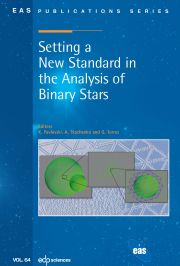No CrossRef data available.
Article contents
Modelling the Evolution of Planets in Disks
Published online by Cambridge University Press: 20 January 2011
Abstract
To explain important properties of extrasolar planetary systems (e.g.close-in hot Jupiters, resonant planets) an evolutionary scenario which allowsfor radial migration of planets in disks is required. During their formation protoplanetsundergo a phase in which they are embedded in the disk and interact gravitationally withit. This planet-disk interaction results in torques (through gravitational forces) actingon the planet that will change its angular momentum and result in a radial migration ofthe planet through the disk. To determine the outcome of this very important process forplanet formation, dedicated high resolution numerical modeling is required. Thiscontribution focusses on some important aspects of the numerical approach that we foundessential for obtaining successful results. We specifically mention the treatment ofCoriolis forces, Cartesian grids, and the FARGO method.
Information
- Type
- Research Article
- Information
- Copyright
- © EAS, EDP Sciences 2011

